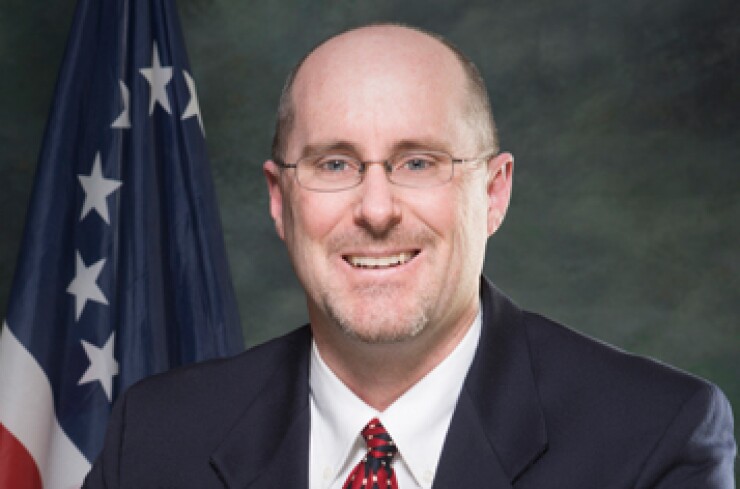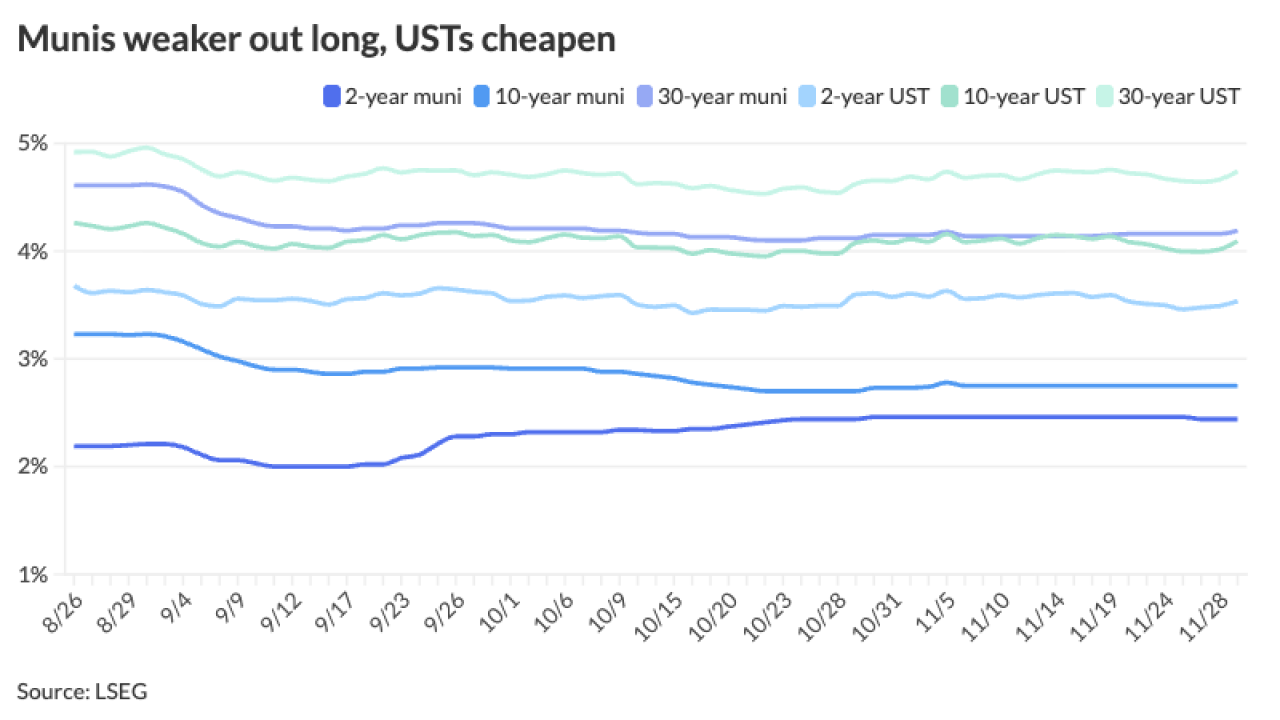
DALLAS As voters across Colorado elect candidates and decide whether to raise nearly $1 billion for schools Tuesday, those in 11 Colorado counties will consider whether to leave the state.
The 51st State Initiative, as the Colorado referendum is known, proposes a separate state of North Colorado that would, theoretically, entitle the sparsely populated prairie counties to two U.S. senators and a member of Congress, along with a governor and state legislature.
Promoters envision a state no longer at the mercy of the Colorado General Assembly, currently controlled by Democrats from the populous Front Range cities and suburbs. Recently enacted state laws on gun control, gay rights, legalization of marijuana and environmental regulations are frequently cited as motivations for the initiative.
“Ultimately, what we’re trying to accomplish is better representation for rural America and more direct representation,” organizer Jeffrey Hare said. “We have a disenfranchised class of voters, that are smaller and don’t have the votes to fend for their values.”
Hare, an unsuccessful candidate for the Colorado General Assembly in 2012, grew up in rural Illinois has lived in Weld County for about seven years, where he works as internet security consultant. He has promoted the secession effort through media interviews, personal appearances, YouTube and Facebook.
“It’s all grass roots, with a very thin budget,” Hare said. “It’s been all local support. The purpose of the ballot is to see how much support there is.”
Although no polling has been done, “the returns from early voting are showing a higher turnout in rural areas,” Hare said. “We’re cautiously optimistic.”
“If this was a pure protest vote, it would win by 80 or 90%,” said Floyd Ciruli, a pollster and political consultant in Denver. “There is a lot of anger at Denver. At the same time, these are real Coloradans they take a lot of pride in the state. I do think it will pass in those counties, but I think that it will be mostly a protest vote.”
While the counties in the energy-producing northeast corner are voting to secede, four cities in the Denver metro area are considering temporary bans on hydraulic fracturing or fracking for natural gas. The moratoriums are based on fears of unknown consequences from the new drilling technique.
“It’s interesting that you have this combination of secession in the rural counties and four fracking votes in more liberal municipalities,” Ciruli said. “To some extent, this secession vote is about natural gas.”
While the 10 northeast Colorado counties are considering banding together as North Colorado, Moffat County in far northwestern Colorado will vote on whether to secede and seek admission to Wyoming or to join the new state.
Moffat County Commissioner John Kinkaid said in announcing plans for the initiative that “it’s up to people like us to make a statement that we’re not happy, and we want to go in a different direction.”
Some Wyoming officials looked askance at Moffat County’s intention of joining their state.
“The country and our state face many significant challenges at this time,” Renny MacKay, spokesman for Gov. Matt Mead, told the Casper Star-Tribune. “This discussion does not move us forward.”
Hare said the new state would have to include contiguous counties. So far, 35 of Colorado’s 64 counties have shown some interest in the movement, he said.
If North Colorado were to navigate the political labyrinth to statehood with its 336,000 people, it would replace Wyoming as the least populous state. Wyoming has 576,412 people, about 58,000 fewer than the city and county of Denver.
Promoters of the proposed new prairie state see the possibility of counties in Kansas and Nebraska throwing in with the renegade Coloradans.
“We’re very early in this process,” Hare said. “We believe the new state’s population will be larger than the roughly 400,000 who live in the counties voting Tuesday.”
What the counties have in common is a generally rural lifestyle, an economy dependent on agriculture and energy production, few racial minorities, and an arid landscape.
About half the counties in the proposed new state lost population in the 2010 census and some, such as Cheyenne County, are among the most rapidly depopulating in the nation. With only 1,836 people in the 2010 head-count, Cheyenne County saw its population fall nearly 18% in a decade.
The largest jurisdiction holding a succession vote is 263,000-resident Weld County, which includes the county seat of Greeley, shares links both to the rural northeast corner of the state and the rapidly growing Front Range of the Rocky Mountains, including nearby Fort Collins and the Denver metropolitan area.
While Weld County commissioners played a leading role in the 51st State Initiative, city officials in Greeley kept some distance.
“Although I also agree that some statewide decisions may negatively impact our rural neighbors and potentially the economic vitality of residents and businesses in Greeley, I don’t agree with the establishment of a new state to resolve those issues,” Greeley mayor Tom Norton wrote in a commentary in the Fort Collins Coloradoan newspaper. “Rather, I support practical dialogue within our current system of government, respecting existing political and geographical boundaries and working with all involved toward practical compromises and solutions.”
Steve Mazurana, a former political science professor at the University of Northern Colorado, was less diplomatic.
“It’s just going to be seen as a crackpot idea by a bunch of crackpot commissioners some of whom are term limited,” Mazurana told the Denver Post. “Some will just call it Crackpottopia.”
Greeley, with general obligation bond ratings of AA-minus from Standard & Poor’s, and Aa3 from Moody’s Investors Service, would be the largest city in the new state, boasting a population of about 100,000.
To the north, Morgan County sidestepped a secession vote, leaving a large hole along Interstate 76 in the front of northeastern counties.
While backers of secession emphasize the need to make a dramatic political statement, they concede that unraveling the intricate links of government and state citizenship would take considerable study.
The status of state universities such as the University of Northern Colorado in Greeley, state parks, three state prisons, water laws, maintenance of state highways and tax policies would be in play.
Opponents of secession note that, with more than half of Weld County’s property taxes paid by the oil and gas industry, economic stability would be shaken. Some residents fear that Weld County’s prosperity would subsidize the other northeastern counties where tumbleweeds outnumber people.
While proponents of secession acknowledge the difficulty of achieving statehood, even if the measure passes in all 10 counties, they sense support from similar movements in other states.
“We are starting to hear from disenfranchised groups all over the country,” proponents wrote in their position paper. “We are truly a divided nation. It is possible, if not likely, that we may not be the only group requesting from Congress the formation of a new state.”
Other movements include one in Northern California, where activists are proposing a new state of Jefferson, an effort previously attempted in 1941.
Michigan’s Upper Peninsula briefly considered seeking independence from the more urbanized southern section.
Some western Marylanders proposed allowing the five westernmost, generally conservative counties to separate from the rest of the state.
Texas Gov. Rick Perry last year floated the idea of seceding from the United States entirely before announcing his bid for president of the undivided nation.
Hare is careful to distinguish his movement from those of Texas and others.
“Texas is talking about seceding from the union. Even Vermont progressive Vermont is talking about seceding from the union,” Hare said. “We’re not asking to secede from the union. We’re asking to divide the state or to leave the state.”
While the secession movement is gaining attention and a degree of ridicule in the national media, politicians in Colorado appear more focused on the proposed Amendment 66 that would raise $950 million through higher income taxes to improve education in the state and compensate for the $1 billion of cuts in public school spending in recent years.
With support for the measure expected to run strongest in the urban areas along Interstate 25, Amendment 66 and the 51st State Initiative might illustrate further the urban-rural divide.
“Most of the Amendment 66 campaign is based on a big metro Denver win, which has been a key to the Democrats’ recent dominance in Colorado,” Ciruli said. “For example, if the amendment can win by 8 points in the Denver metro area, it can lose by 10 points statewide.”
Hare, who serves on the board of a charter school in Weld County, opposes the tax measure.
“I favor less state and federal involvement in schools and more local control,” he said.
Meanwhile, Rep. Cory Gardiner, the 4th congressional district Republican representative from Yuma, in one of the counties considering secession, has not issued an opinion on the movement, despite frequent attacks on government.
“Congressman Gardner believes this ballot initiative is a state issue,” his spokesman said in a statement. Since being elected to federal office, he has consistently abstained from taking public positions on ballot initiatives in Colorado — whether it be marijuana legalization or tax increases — he has not taken a public stance on state and local measures.”





